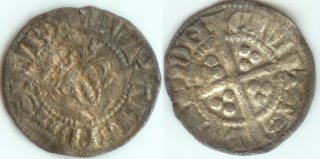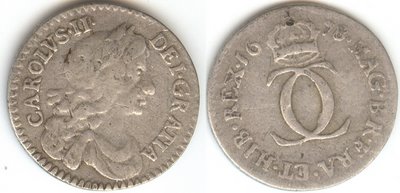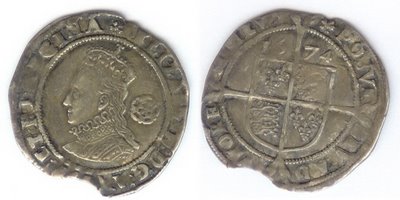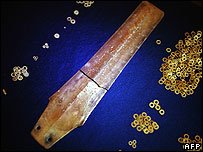Here is an interesting way to see what events happened the day you were born. Here are the events for my birthday it would be interesting to see what events happened for others.
Link: http://en.wikipedia.org/wiki/July_29
I found it to be easier to just insert the day for other people than trying to run a search. So use the link above and put in your day if you like, and come back and post your events to the comment's section on my Blog. I think it could be fun.
July 29 is the 210th day (211th in leap years) of the year in the Gregorian Calendar, with 155 days remaining.
Events
1014 - Byzantine-Bulgar Wars: Battle of Kleidion: Byzantine emperor Basil II inflicts a decisive defeat on the Bulgarian army, but his subsequent savage treatment of 15,000 prisoners reportedly causes Tsar Samuil of Bulgaria to die of shock.
1030 - Ladejarl-Fairhair succession wars: Battle of Stiklestad - King Olaf II fights and dies trying to regain his Norwegian throne from the Danes.
1565 - Mary Stuart, widowed, marries Lord Darnley, duke of Albany.
1567 - James VI is crowned King of Scotland at Stirling.
1588 - Anglo-Spanish War: Battle of Gravelines - English naval forces under command of Lord Charles Howard and Sir Francis Drake defeats the Spanish Armada off the coast of Gravelines, France.
1693 - War of the Grand Alliance: Battle of Landen - France wins a Pyrrhic victory over Allied forces in the Netherlands.
1793 - John Graves Simcoe decides to build a fort and settlement at Toronto, having sailed into the bay there.
1830 - Abdication of Charles X of France.
1836 - Inauguration of the Arc de Triomphe in Paris.
1847 - Cumberland School of Law founded in Lebanon, Tennessee, USA. At the end of 1847 only 15 law schools exist in the United States.
1848 - Irish Potato Famine: Tipperary Revolt - In Tipperary, an unsuccessful nationalist revolt against British rule is put down by police.
1851 - Annibale de Gasparis discovers asteroid 15 Eunomia.
1858 - United States and Japan sign the Harris Treaty.
1864 - American Civil War: Confederate spy Belle Boyd is arrested by Union troops and detained at the Old Capitol Prison in Washington, DC.
1899 - The First Hague Convention is signed.
1900 - In Italy, King Umberto I of Italy is assassinated by Italian-born anarchist Gaetano Bresci.
1907 - Sir Robert Baden-Powell sets up the Brownsea Island Scout camp in Poole Harbour on the south coast of England. The camp ran from August 1-9, 1907, and is regarded as the founding of the Scouting movement.
1920 - Construction of the Link River Dam begins as part of the Klamath Reclamation Project.
1921 - Adolf Hitler becomes leader of the National Socialist German Workers Party.
1932 - Great Depression: In Washington, DC, U.S. troops disperse the last of the "Bonus Army" of World War I veterans.
1945 - The BBC Light Programme radio station was launched for mainstream light entertainment and music.
1947 - After being shut off on November 9,
1946 for a memory upgrade, ENIAC, the world's first all-electronic digital computer, is reactivated. It will remain in continuous operation until October 2, 1955.
1948 - Olympic Games: The Games of the XIV Olympiad - After a hiatus of 12 years caused by World War II, the first Summer Olympics to be held since the 1936 Summer Olympics in Berlin opened in London.
1957 - The International Atomic Energy Agency is established.
1958 - The U.S. Congress formally creates the National Aeronautics and Space Administration (NASA).
1959 - First congressional elections in Hawaii as a state of the Union.
1965 - Vietnam War: The first 4,000 101st Airborne Division paratroopers arrive in Vietnam, landing at Cam Ranh Bay.
1966 - Musician Bob Dylan crashes his Triumph motorcycle in upstate New York. He goes into seclusion for over a year before reemerging and reinventing himself artistically.
1967 - Vietnam War: Off the coast of North Vietnam the USS Forrestal catches on fire in the worst U.S. naval disaster since World War II, killing 134.
1967 - At the fourth day of celebrating its 400th anniversary, the city of Caracas, Venezuela was shaken by an earthquake, leaving approximately 500 dead.
1976 - In New York City, the "Son of Sam" kills one person and seriously wounds another in the first of a series of attacks.
1981 - Lady Diana Spencer marries Charles, Prince of Wales.
1987 - British PM Margaret Thatcher and French president François Mitterrand sign the agreement to build the tunnel under the English Channel (Eurotunnel).
1987 - Indian PM Rajiv Gandhi and Sri Lankan President J. R. Jayawardene sign the Indo-Lankan Pact on ethnic issue.
1993 - The Israeli Supreme Court acquits accused Nazi death camp guard John Demjanjuk of all charges and he is set free.
1996 - The controversial child protection portion of the Communications Decency Act (1996) is struck down as too broad by a U.S. federal court.
2004 - U.S. Senator John F. Kerry of Massachusetts accepts the Democratic nomination for President of the United States at the 2004 Democratic National Convention in Boston, Massachusetts.
2005 - Astronomers announce their discovery of Eris, a possible ninth planet.
Births
1166 - Henry II of Champagne (d. 1197)
1605 - Simon Dach, German poet (d. 1659)
1763 - Philip Charles Durham, Royal Navy Admiral (d. 1845)
1801 - George Bradshaw, English publisher (d. 1853)
1805 - Alexis de Tocqueville, French historian and political scientist (d. 1859)
1843 - Johannes Schmidt, German linguist (d. 1901)
1849 - Max Nordau, Austrian author, philosopher, and Zionist leader (d. 1923)
1865 - Alexander Glazunov, Russian composer (d. 1936)
1869 - Booth Tarkington, American author (d. 1946)
1872 - Eric Alfred Knudsen, American author, folklorist (d. 1957)
1874 - James Shaver Woodsworth, Canadian minister, social worker, and politician (d. 1942)
1876 - Maria Ouspenskaya, Russian-born actress (d. 1949)
1878 - Don Marquis, American author (d. 1937)
1883 - Porfirio Barba-Jacob, Colombian poet and writer (d. 1942)
1883 - Benito Mussolini, Italian dictator (d. 1945)
1884 - Ralph A. Bard, U.S. Navy Undersecretary (d. 1975)
1887 - Sigmund Romberg, Hungarian-born composer (d. 1951)
1892 - William Powell, American actor (d. 1984)
1897 - Sir Neil Ritchie, British general (d. 1983)
1898 - Isidor Isaac Rabi, American physicist, Nobel Prize Laureate (d. 1988)
1900 - Eyvind Johnson, Swedish writer, Nobel Prize Laureate (d. 1976)
1904 - J. R. D. Tata, Indian pioneer aviator and entrepreneur (d. 1993)
1905 - Clara Bow, American actress (d. 1965)
1905 - Dag Hammarskjöld, Swedish 2nd UN Secretary-General, Nobel Prize Laureate (d. 1961)
1905 - Stanley Kunitz, American poet (d. 2006)
1905 - Thelma Todd, American actress (d. 1935)
1906 - Diana Vreeland, French-born fashion editor (d. 1989)
1907 - Melvin Belli, American lawyer and actor (d. 1996)
1913 - Erich Priebke, Nazi war criminal
1914 - Irwin Corey, American stand-up comedian.
1916 - Charlie Christian, American jazz guitar virtuoso (d. 1942)
1918 - Edwin O'Connor, American novelist and Pulitzer Prize for Fiction winner (d. 1968)
1920 - Rodolfo Acosta, Mexican actor (d. 1974)
1924 - Lloyd Bochner, Canadian actor (d. 2005)
1925 - Mikis Theodorakis, Greek composer
1925 - Ted Lindsay, professional ice hockey player
1927 - Harry Mulisch, Dutch author
1929 - Jean Baudrillard, French philosopher
1930 - Paul Taylor, American dancer and choreographer
1932 - Nancy Landon Kassebaum Baker, U.S. Senator from Kansas
1933 - Lou Albano, Wrestling manager
1935 - Peter Schreier, German tenor
1936 - Elizabeth Dole, U.S. Senator from North Carolina
1937 - Daniel McFadden, American economist, Nobel Prize Laureate
1938 - Peter Jennings, Canadian-born television journalist (d. 2005)
1941 - David Warner, Canadian actor
1942 - Tony Sirico, American actor
1943 - David Taylor, English snooker player
1951 - Dan Driessen, baseball player
1953 - Ken Burns, American producer and director
1953 - Geddy Lee, Canadian musician(Rush)
1957 - Nellie Kim, Russian gymnast
1955 - Dave Stevens, Illustrator
1959 - Sanjay Dutt, Indian actor
1959 - Ruud Janssen, Dutch writer and artist
1959 - Dave LaPoint, baseball player
1962 - Scott Steiner, US professional wrestler
1965 - Chang-Rae Lee, Korean-born author
1965 - Luis Alicea, Baseball player
1966 - Martina McBride, American singer
1972 - Wil Wheaton, American actor
1973 - Stephen Dorff, American actor
1973 - Wanya Morris, American singer (Boyz II Men)
1975 - Corrado Grabbi, Italian footballer
1976 - Josh Radnor, American actor
1979 - Abs Breen, English singer
1979 - Karim Essediri, Tunisian footballer
1980 - Fernando González, Chilean tennis player
1981 - Fernando Alonso, Spanish race car driver
1982 - Allison Mack, American actress
Deaths
238 - Pupienus, Roman Emperor
238 - Balbinus, Roman Emperor
1030 - Olaf II of Norway (b. 995)
1099 - Pope Urban II (b. 1042)
1108 - Philip I of France (b. 1052)
1507 - Martin Behaim, German-born navigator and geographer (b. 1459)
1612 - Jacques Bongars, French scholar and diplomat (b. 1554)
1644 - Pope Urban VIII (b. 1568)
1752 - Peter Warren, British admiral
1781 - Johann Kies, German astronomer and mathematician (b. 1713)
1792 - René Nicolas Charles Augustin de Maupeou, Chancellor of France (b. 1714)
1813 - Jean-Andoche Junot, French general (b. 1771)
1833 - William Wilberforce, English abolitionist (b. 1759)
1839 - Gaspard de Prony, French mathematician (b. 1755)
1844 - Franz Xaver Wolfgang Mozart, Austrian composer (b. 1791)
1856 - Robert Schumann, German composer (b. 1810)
1887 - Agostino Depretis, Italian statesman (d. 1813)
1890 - Vincent van Gogh, Dutch painter (b. 1853)
1900 - King Umberto I of Italy (b. 1844)
1913 - Tobias Michael Carel Asser, Dutch jurist, Nobel Prize Laureate (b. 1838)
1938 - Nikolai Krylenko, Russian/Soviet jurist and politician (b. 1885)
1951 - Hozumi Shigeto, Japanese author (b. 1883)
1954 - Coen de Koning, Dutch speed skater (b. 1879)
1970 - John Barbirolli, English conductor (b. 1899)
1973 - Roger Williamson, English racing driver (b. 1948)
1974 - Cass Elliot, American musician (b. 1941)
1974 - Erich Kästner, German author (b. 1899)
1975 - James Blish, American writer (b. 1921)
1976 - Mickey Cohen, American gangster (b. 1913)
1979 - Herbert Marcuse, German philosopher (b. 1898)
1979 - Bill Todman, American television producer (b. 1916)
1981 - Robert Moses, New York public works official (b. 1888)
1982 - Harold Sakata, Japanese-American actor (b. 1920)
1982 - Vladimir Zworykin, Russian physicist and inventor (b. 1889)
1983 - Luis Buñuel, Spanish director (b. 1900)
1983 - Raymond Massey, Canadian actor (b. 1896)
1983 - David Niven, English actor (b. 1910)
1984 - Fred Waring, American band leader and inventor (b. 1900)
1990 - Bruno Kreisky, Chancellor of Austria (b. 1911)
1994 - Dorothy Crowfoot Hodgkin, British chemist, Nobel Prize Laureate (b. 1910)
1994 - Megan Kanka, rape victim, basis of Megan's Law (b. 1986)
1996 - Jason Thirsk, American bassist (Pennywise) (b. 1967)
1996 - Marcel Schützenberger, French mathematician (b. 1920)
1998 - Jerome Robbins, American choregrapher (b. 1918)
2001 - Edward Gierek, Polish politician (b. 1913)
2001 - Wau Holland, German hacker (b. 1951)
2003 - Foday Sankoh, Sierra Leonean rebel leader (b. 1937)
2004 - Rena Vlahopoulou, Greek actress (b. 1923)

















